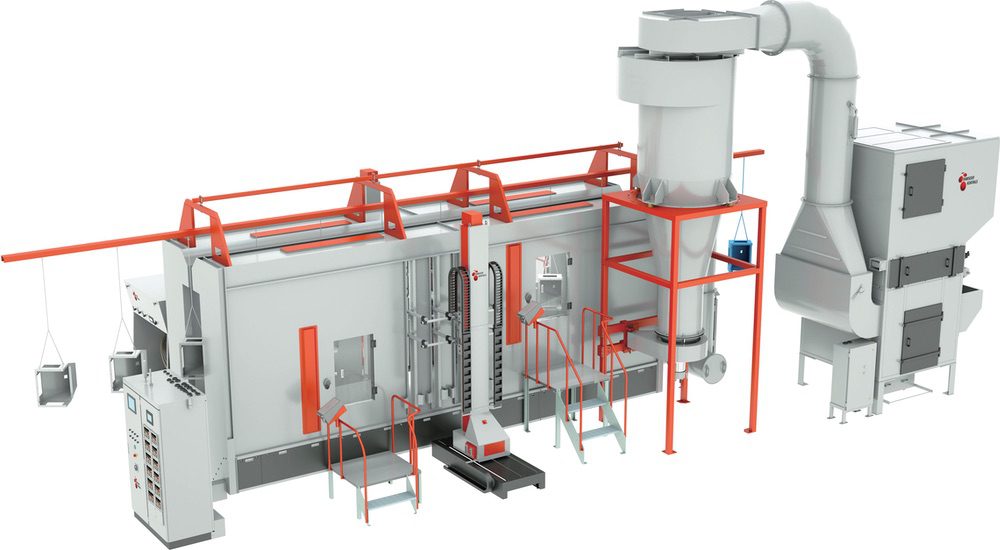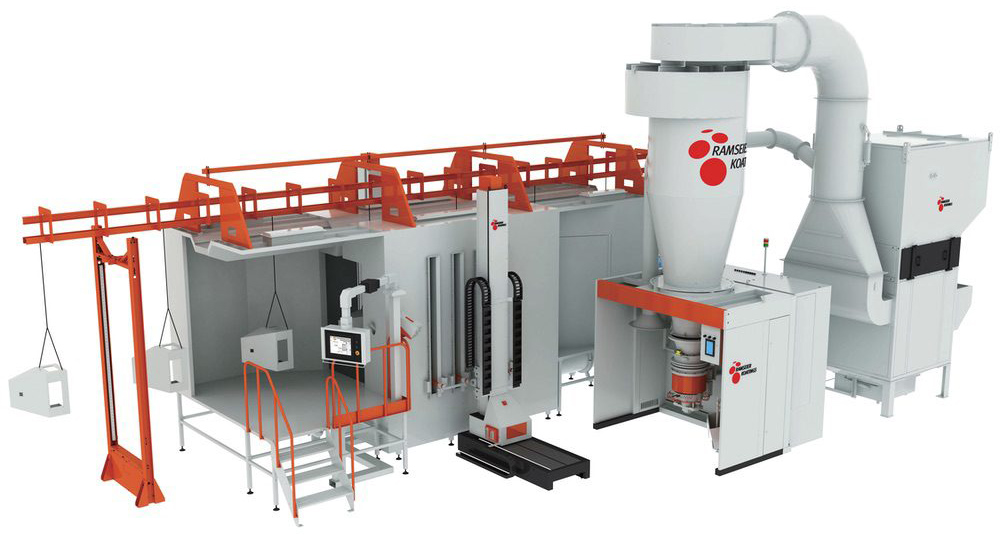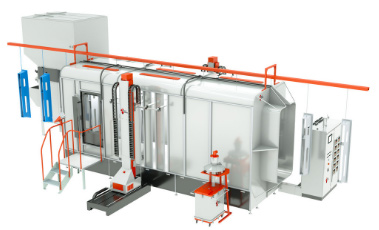
+852 2363 2511
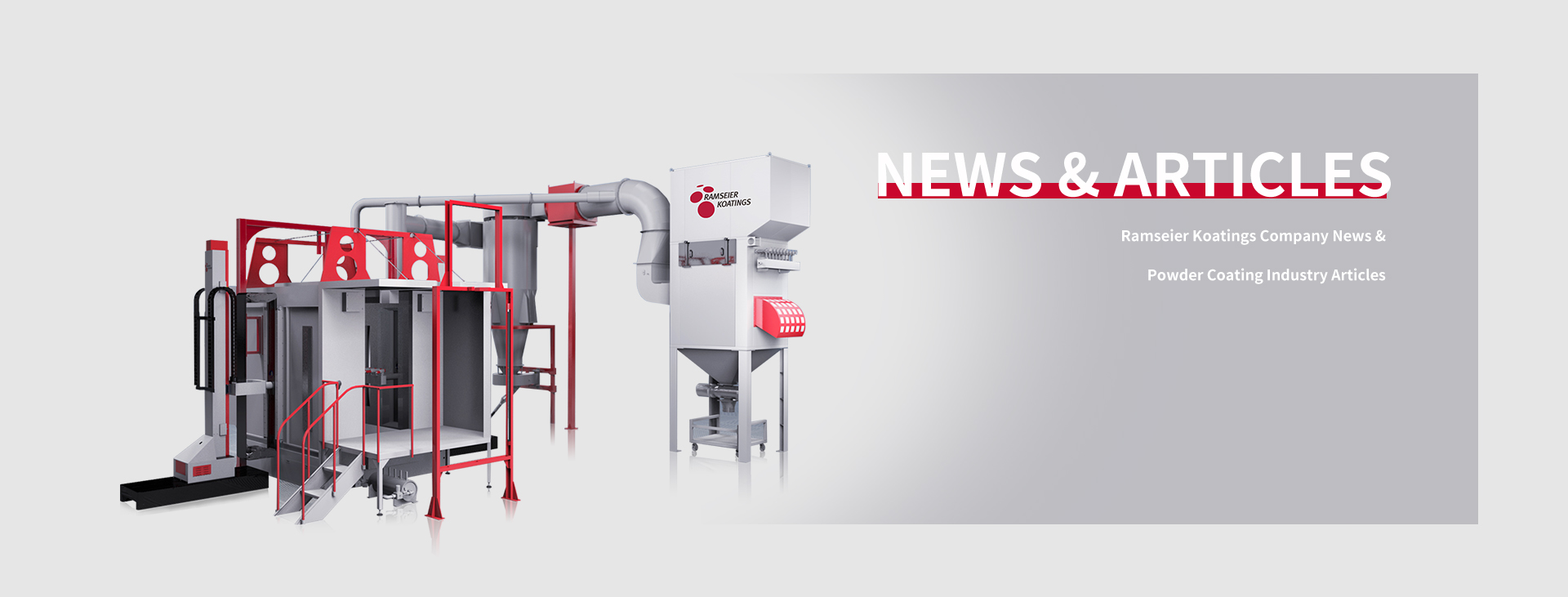







Powder coating is a lucrative business that caters to clients with materials that need protective and decorative finishing. It’s a popular dry finishing alternative to other surface coating techniques such as painting, anodizing, electroplating, and galvanizing since it creates a durable and corrosion resistant surface without producing harmful volatile organic compounds like VOCs. Unlike anodizing, powder coating can be done in a variety of finishes and colors. It’s a purely dry finishing technique that doesn’t use solvents thus creating thicker coats. It also doesn’t suffer from sags and drips, resulting in a uniformly coated surface.
Also, unlike electroplating, anodizing, and galvanizing, which can only be done on metal surfaces, powder coating can be done on any surface as long as the material can withstand temperatures of up to 450 degrees Celsius. It’s usually a three-step process starting with pre-treatment where the surface of the object to be coated is sandblasted, washed, or wiped to remove dirt, debris, and oils that might interfere with the powder fusion.
Depending on the size of your project, you can set up a specialized blast room with massive air compressor sandblasters or just use whatever equipment you have. Following washing, the parts must be dried in an oven.
The second stage of powder coating is the application stage, where spray guns are used to charge finely grounded resin particles and spray them onto the object’s surface. The object is usually grounded, allowing the negatively charged powder particles to stick onto the surface before curing. Heat curing is the last stage of powder coating. It’s usually done in a powder coating oven.
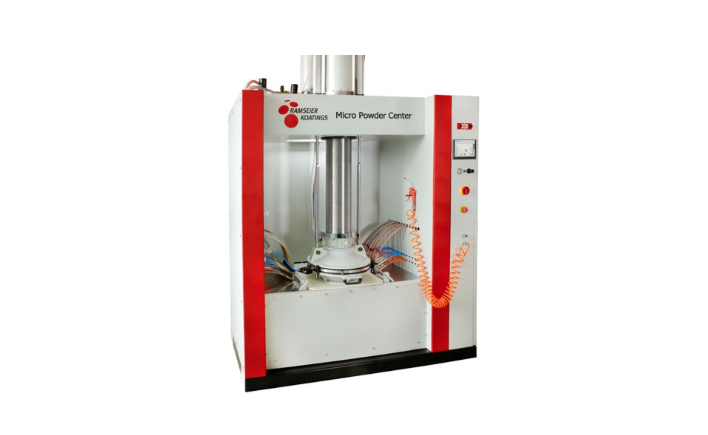
A powder coating oven is an enclosed compartment for curing powder coated surfaces. Curing involves heating the coated object at high temperatures, allowing the resin or pigment particles to melt and fuse together into a super durable and decorative finishing.
Curing is typically done at around 300 to 850 degrees Fahrenheit for like 10 to twenty minutes. The exact temperature and duration will depend on the powder coating you are using plus the size, thickness and even shape of the object being cured. Generally, thicker materials take longer to cure, while complicated shapes require finesse.
Powder coating ovens provide the environment and heat needed to cure coating and create a high-quality surface finish. You can modify your household propane grill or natural oven and turn it into a curing compartment for powder coating. Alternatively, if you plan on doing some significant powder coating especially for commercial purposes choose professional powder coating ovens for high quality finishing. They come in different sizes and can be gas-powered, electric, LP-fueled. Professional ovens are undersigned for premium finishing plus efficient fuel usage.
That said, a powder coating oven is a significant investment, so it’s wise to make the right purchase decision and keep off regrets. Here’s a look at what to consider when shopping for powder coating ovens:
Powder coating ovens can be classified into batch or conveyor ovens. The former is the simplest powder coating oven you’ll find and is designed for curing smaller batches of powder coated parts. On the other hand, conveyor ovens have a moving belt that transports powder coated parts through an oven for curing. Conveyor ovens are sophisticated systems for curing parts in large batches.
Once you’ve decided on batch or conveyor ovens, you have to consider the heating mechanism. Powder coating ovens can be classified by heating mechanisms as either infrared or convection ovens.
Infrared ovens transfer heat directly to the object, allowing the coated surface to cure from the inside out. This is known as radiant heating and is characterized by super-fast turnaround times but is best employed when working on large batches of parts with fairly even and consistent shapes. It typically costs more than the alternative.
The alternative, of course, is convection heating. These types of ovens have systems that move hot air over the coated part, allowing it to cure from the outside to the inside. It’s cheaper than infrared technology but typically slower.
Convection ovens can be broken down further into gas and electric ovens. Gas ovens are cheaper to operate, but you will need to ensure you have enough gas available; otherwise, bang goes any fond hopes of a smooth curing operation.
On the other hand, electric ovens are often cheaper to acquire but won’t allow you to vary the curing temperature over a wide range. They often come in Class A or, and B, with the former offering more safety features in case you’re working with VOCs or combustibles. However, if you don’t plan to do liquid curing in addition to powder coating, Class B electric ovens will work just fine since powder coating is a dry finishing procedure.
For proper guidance between class A and B ovens, speak with your local authority and find out which ovens they recommend. This will allow you to stay on the right side of local environmental laws and regulations.
Powder coating oven constructions are available with different heights, widths and depths. Make sure you get the right oven size for your curing operation. This depends on the kind of powder coating you hope to be doing.
Basically, check that the oven compartment is big enough to accommodate the objects you want to coat without the said object blocking the ductwork from which hot air flows into the oven. The ductwork is typically located in the walls or ceilings, so it’s best if the coated material seats away from these parts; otherwise, it’ll block free airflow. Also, if the coated parts touch the walls or ceilings, the powder can flake off, forcing you to redo the coating. The coated parts should also sit far from the door to allow you to operate the door with ease.
Next, the parts should be able to fit fully without angling or tilting. For example, if you hope to coat a 30-inch-long material, get an oven that’s over 20 inches long. Otherwise, you’ll be forced to fit in the material at an angle, and they’ll end up touching the walls and ceilings or blocking the normal operation of the door.
Additionally, if you are forced to fit materials diagonally or at an angle, you won’t be able to fill the oven as the manufacturer intended. It’s just an awkward situation overall, so try to avoid it by buying a large oven that fits your materials comfortably.
Don’t forget to factor in how the coated material will be moved in and out of the curing oven. In some cases, you will have to hang the parts on rolling racks that go inside the oven, so make sure the oven is large enough to accommodate the rack. Other cases call for the use of carts. Ensure the oven is large enough for these, too. Otherwise, parts may lose coating when the cart or rack bumps against the oven walls. Always consider the cart or rack size when determining the right oven size.
Consider the amount of work you hope to do per shift. This can be a whole session, day or week. Basically, if you are aiming for a large throughput, buy a large oven. On the other hand, if you only powder coat small batches per session, just buy a tiny walk-in oven. When it comes to throughput, consider the pacing. This involves the conveyor line speed, which depends on how long the parts will need to spend in the oven.
Another important factor to keep in mind is the available floor space. Get accurate measurements of the space you have for the oven you want to buy. Make sure to consider the ceiling height, floor issues, inconspicuous beams, HVAC runs, and other unusual structures. Ensure the oven fits well and leaves enough staging area where the coated parts will sit temporarily before being loaded for curing.
Additionally, leave enough space for carts to move. Remember, most carts can’t make sharp turns, so leave enough space for turning radius.
In case of floor space constraints, consider solutions such as raising the oven or placing it outside the powder coating premises. However, you must minimize the distance from the powder booth to the oven. The last thing you want is the powder to dry before curing.
Different curing ovens are designed to operate at different temperature ranges. Typically, powder curing is done at temperatures ranging from 300 to 850 degrees Fahrenheit. Some curing ovens have wider temperature ranges, while others operate within narrow temperature ranges.
Select an oven with a temperature range that’s compatible with the material you want to powder coat. Polyester cures at around 350 F, while epoxy settles in at around 400F. For acrylic and nylon powders, you’ll need to hit around 325F.
The performance of the coating oven matters, too. Consider the temperature uniformity. While it’s impossible to get ovens with perfect temperature uniformity, try and get one with better temperature uniformity. Inspect the air circulation system. Basically, ovens with powerful air circulation systems have a more even heat distribution.
Another factor that influences temperature uniformity is the heat retention capability. This depends on the insulation and wall thickness. To boost heat retention and reduce fuel wastage, 300-500 Fahrenheit ovens should have 6-inch-thick walls with as small as possible openings. Air seals can be added to prevent rising hot air from escaping.
Apart from wall thickness and insulation, check if the heating elements are evenly distributed throughout the compartment and that the oven itself has accurate and reliable temperature controls.
You can use a thermocouple data logger to gauge the temperature uniformity of a curing oven. Basically, use it to record temperatures at different points of the compartment at different periods and analyze it to determine the temperature uniformity.
Basically, the temperature at any point in the compartment should always be close to the set temperature with an allowable +/-10 degrees Celsius deviation.
Accessibility is important when it comes to cleaning residues from the oven. Generally, larger ovens are easier to clean than smaller ones. In any case, ducts should be designed to eliminate gaps between interior frames and the floor, and surfaces should be made smooth to allow for easier cleaning.
For large ovens with in-floor conveyors, it’ll be best if one side wall features a discharge system, allowing walls and floors to be scrubbed using cleaning equipment rather than going in the oven to wipe things with a rag.
Not thinking beyond tomorrow is a sure way to create problems for your long-term powder coating ambitions. You will never regret buying a larger oven, but you will definitely regret buying a smaller one when you get bigger parts or wish to increase your output per shift.
Consider the oven design and check if it can be expanded and even reconfigured to suit prevailing powder coating needs. Modular designs start from the conveyor or batch systems to the heating parts. Check how easy it is to reconfigure the airflow and internal temperature and add or remove heating modules.
Alternatively, just go for the largest curing oven you think you’ll ever need. This is the better option since it’s more affordable from the very beginning. It will allow you to expand your throughput without having to fork extra dollars for new expansion parts.
You can even diversify your curing and start powder-coating fence sections, handrails, beams, columns, bumpers, body panels, satellite parts, helicopter components, cabinets, tabletops, etc. You can take on these bigger projects while still catering to clients with regular sized parts.
That’s it, powder coating enthusiasts! Curing ovens are important for powder coating projects. They provide the environment and heat necessary to melt and fuse powder into a uniform protective and decorative surface layer.
As mentioned, you can choose to jury rig household ovens or grills for once-in-a-while projects or buy professional ovens meant to provide uniform heating for a visually pleasing finish. If you’ve made up your mind on the latter, we would like to talk to you about our ovens.
Powder coating has been our passion project for 38 years, as evident in the evolution of our products from manual spray units to patented products and automatic powder coating systems. We have a range of powder-coating ovens for your consideration. Please talk to our team for further guidance.
